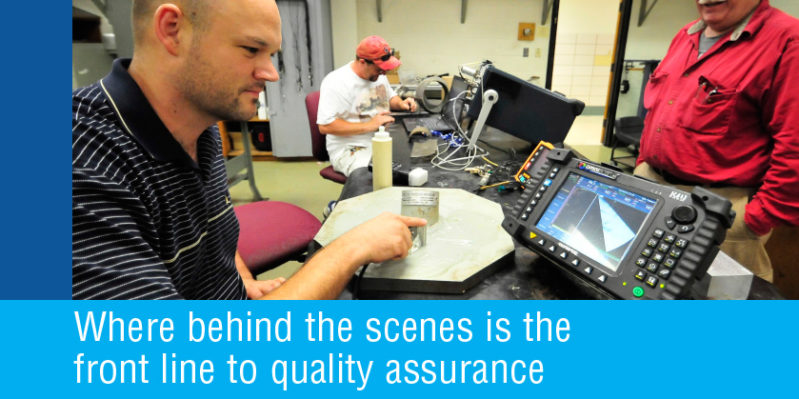
Ever wondered how materials are tested to hold up? There are technicians behind the scenes who have inspected and tested the items to ensure the highest quality. Yet, careers in such line of work, called non-destructive testing, often go undetected.
“We face a loss of half of our non-destructive testing workers due to retirement,” said Stephen Rowland, NDT program director at San Jacinto College. “It takes three new technicians to replace one retiree to make up for the number of certifications that one person has earned over the years.”
Defined as a part of material science, non-destructive testing jobs often include inspection technicians, shearwave technicians, quality control technicians, inspection engineers, corrosion technicians and metallurgical technicians. It is a field where the oldest method dates back to the late 1800s.
“Non-destructive testing is used in a wide variety of industries, not just the oil and gas or petrochemical that we are so familiar with in Houston, but also aircraft and aerospace, turbines, nuclear power, structural steel such as in building and bridges, wire cables and power distribution, ships, rail systems, or military, plus electronics just to name a few,” said Leslie Crnkovic, non-destructive testing professor at San Jacinto College. “As infrastructure becomes older, more inspections will be needed for safe operations. As more products are manufactured, more inspections will be needed to assure their level of quality.”
Non-destructive testing requires training to conduct a variety of examinations, inspections, or tests that causes no harm to the item being inspected. The College offers training in all major methods of testing, including quality assurance, and destructive testing methods such as in metallurgy, plus corrosion and weld inspection.
Educational pathways at San Jacinto College are structured so that each certificate builds upon the previous, and can eventually lead to an associate of applied science degree. The College also offers a certificate in quality assurance and is planning for an associate degree in quality assurance for next year.
“What we provide is an overall curricula in testing and inspection systems, of which non-destructive testing is the foundation,” said Crnkovic. “Non-destructive testing is a career that is deeply mixed with metallurgy, metrology, and quality assurance, all of which are taught at San Jacinto College, but generally not at nonacademic NDT schools. This provides students with more than a specific method, but the foundation under science. This also allows students to have a robust career tract; the sky is the limit.”
Jeannie Peng-Armao

